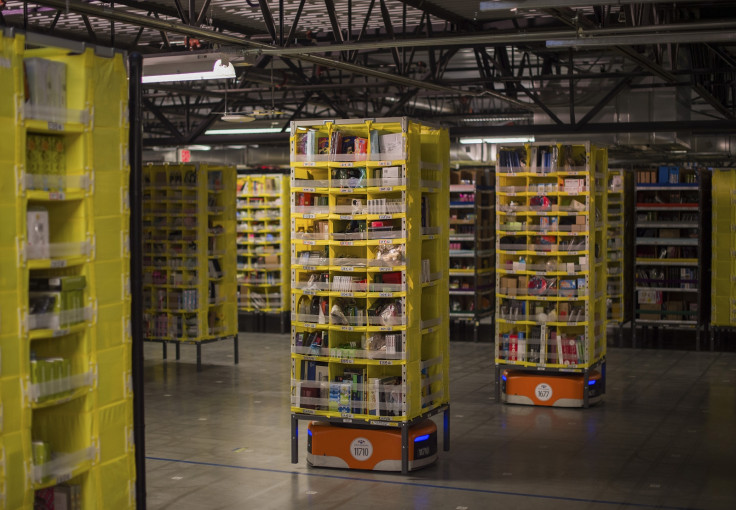Cyber Monday: Army of 15,000 robots help Amazon deliver Christmas gifts on time

An army of 15,000 robots swarming across million-square-feet warehouses is helping Amazon deliver millions of items every day in the run-up to Christmas.
Working alongside staff, the robots glide through Amazon's massive warehouses, moving shelves stacked high with containers full of products, and with their help a single warehouse will soon up its daily shipping volume from 700,000 items to 1.5 million.
The robots were born out of Amazon's $775 million (£493m/€621m) acquisition in 2012 of Kiva Systems, a startup which built warehouse robots and the software used to automate simple stock-moving tasks.
Each robot weighs 145kg and can carry stacks of shelves loaded with products weighing up to 340kg. These shelves are then first used to take new stock to the correct aisle, before returning to collect ordered items and take them to an employee, who picks the right item and posts it to the customer.
At one of Amazon's most advanced warehouses in Tracy, California, Amazon stocks some 3.5 million different items and stock levels at the facility can reach 21 million items in total. But once the robot fleet is expanded and the floor space better used, the warehouse will have space for an extra five million items. At the same time, total items shipped each day will increase from 700,000 now, to 1.5 million once the automated system it fully implemented.
As they can repeat the same tasks relentlessly, without getting tired or making mistakes, robots like these are an attractive alternative to humans - but Amazon insists that warehouse automation will not mean redundancies for the 4,000 staff working at the Tracy facility, 2,500 of which are temporary Christmas workers.
Speaking to Wired, Dave Clark, Amazon's vice president of worldwide operations, said the robots are merely "doing the part that's not that complicated. It's just moving inventory around. The person is doing the complicated work, which is reaching in, identifying the right product, making sure it's the right quality".
Clark said that, instead of robots replacing workers, they allow Amazon to grow and create new jobs for the displaced staff. "As you're getting efficient in one thing as it matures, you're investing in something new in a new place. I see that cycle continuing for a long time."
© Copyright IBTimes 2025. All rights reserved.






















